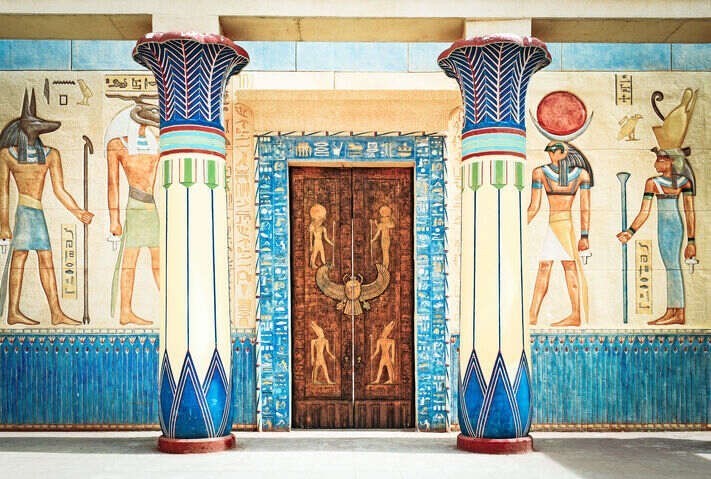
Egypt Weather in January – Complete Climate Guide
Egypt, a land of ancient wonders and modern vibrancy, offers a diverse range of experiences throughout the year. January, in particular, is a time of pleasant weather and optimal conditions for exploring the country’s renowned historical sites, bustling cities, and serene landscapes. This detailed guide will delve into what you can expect from Egypt’s weather in January, helping you plan a perfect winter getaway.
Overview of Egypt’s Climate
Egypt's climate is predominantly desert, characterized by hot summers and mild winters. January falls into the winter season, which is the coolest period of the year, making it an ideal time for travel. However, the climate can vary significantly between regions, so understanding these variations will help you make the most of your visit.
General Climate Trends
- Temperature: In January, temperatures are generally mild. Daytime temperatures range from 18°C to 22°C (64°F to 72°F), while nighttime temperatures can drop to around 8°C to 12°C (46°F to 54°F).
- Rainfall: Rain is infrequent but not impossible. Coastal areas and northern regions receive slightly more rain compared to the southern parts of Egypt.
- Humidity: The humidity level is relatively low, contributing to the comfortable feel of the weather.
Regional Weather Insights
-
Cairo and the Nile Delta
Temperature: In Cairo, January temperatures range from 10°C to 20°C (50°F to 68°F). Daytime temperatures are pleasant, but nights can be chilly.
Rainfall: Rainfall is minimal, but occasional showers may occur. The chances of rain increase slightly towards the end of the month.
What to Wear: Layered clothing is recommended to adjust to temperature changes between day and night. A light jacket or sweater will be useful for cooler evenings.
Activities: January is a great time to visit Cairo’s iconic landmarks such as the Pyramids of Giza, the Sphinx, and the Egyptian Museum. The cooler weather makes walking around historical sites more comfortable.
-
Luxor and Aswan
Temperature: Luxor and Aswan enjoy mild temperatures in January, ranging from 12°C to 24°C (54°F to 75°F). Days are generally sunny and warm, while nights can be cooler.
Rainfall: Rain is rare in these southern cities, making January an excellent time to explore the temples and tombs along the Nile.
What to Wear: Light, breathable clothing for daytime and a warmer layer for the cooler evenings. A hat and sunscreen are essential for sun protection during the day.
Activities: Luxor, with its Valley of the Kings, Karnak Temple, and Luxor Temple, is ideal for exploration in January’s mild weather. Similarly, Aswan’s attractions, such as Abu Simbel and the Nubian Museum, are comfortably accessible.
-
Red Sea Coast
Temperature: Cities like Hurghada and Sharm El Sheikh experience mild temperatures ranging from 15°C to 25°C (59°F to 77°F). The sea temperature is also relatively warm, making it suitable for water activities.
Rainfall: Rainfall is infrequent, but occasional showers can occur. The region remains mostly dry.
What to Wear: Swimwear for daytime beach and water activities, along with a light jacket for cooler evenings.
Activities: January is a great time for diving, snorkeling, and relaxing on the beautiful beaches of the Red Sea. The cooler weather also makes exploring the local resorts and attractions more enjoyable.

-
Sinai Peninsula
Temperature: In places like Trip to St. Catherine and Mount Sinai, temperatures range from 5°C to 20°C (41°F to 68°F). The desert climate can lead to chilly mornings and nights.
Rainfall: Rainfall is minimal, but occasional showers can occur.
What to Wear: Layered clothing, including warm layers for cold mornings and evenings. A warm jacket is advisable for cooler nights.
Activities: January is a good time to trek Mount Sinai and visit St. Catherine’s Monastery without the extreme heat. The cool temperatures are ideal for hiking and exploring the region’s unique landscapes.
What to Expect: Monthly Highlights
Historical Sites
January’s cool and dry weather is perfect for visiting Egypt’s historical sites. The lower temperatures make exploring the vast complexes of the pyramids, temples, and tombs more pleasant. Expect fewer crowds compared to the peak summer months, providing a more relaxed experience.
Festivals and Events
- Coptic Christmas: Celebrated on January 7th, Coptic Christmas is a significant holiday in Egypt. While it may not involve grand public celebrations, you can experience the local traditions and special church services.
Travel Tips
- Health and Safety: Stay hydrated, wear sunscreen, and be cautious with street food. Although it’s cooler, the sun can still be strong, especially during midday.
- Currency and Payment: The local currency is the Egyptian Pound (EGP). Credit cards are widely accepted in major cities and tourist areas, but having cash for smaller purchases and tips is advisable.
- Local Customs: Respect local customs and dress modestly, especially when visiting religious sites.
Planning Your Itinerary
Day 1-3: Cairo
- Explore the Pyramids of Giza, the Sphinx, and the Egyptian Museum.
- Visit Islamic Cairo, including the Citadel of Saladin and Khan El Khalili Bazaar.
Day 4-5: Luxor
- Discover the Valley of the Kings, Karnak Temple, and Luxor Temple.
- Enjoy a felucca ride on the Nile.
Day 6-7: Aswan
- Visit the Temple of Philae and Abu Simbel.
- Experience local Nubian culture.
Day 8-10: Red Sea Coast
- Relax on the beaches of Hurghada or Sharm El Sheikh.
- Engage in water activities such as diving and snorkeling.
Egypt: Journey Through Ancient History
Egypt in January offers a comfortable climate for exploring the country’s rich history and stunning landscapes. Whether you're visiting the bustling streets of Cairo, the ancient temples of Luxor, or the serene beaches of the Red Sea, January’s mild temperatures and low rainfall create ideal conditions for a memorable trip.



